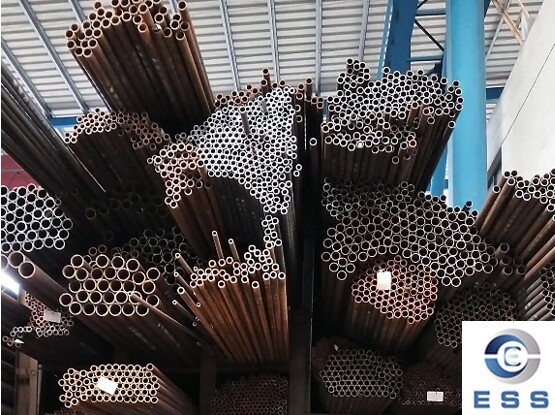DN40 carbon
steel pipe is a steel pipe with a specific outer diameter of 48.3mm. This
type of steel pipe is usually used to transport fluids such as gas, water, oil,
etc. The material of DN40 carbon steel pipe is usually carbon steel, which has
high strength and toughness and can withstand high pressure and temperature. In
addition, this type of pipe also has good plasticity and weldability, which is
easy to process and install.

Advantages of DN40 carbon steel pipe
1. High strength and toughness
DN40 carbon steel pipe is usually made of
carbon steel, which has high strength and toughness, can withstand high
pressure and temperature, and is suitable for various environments and usage
scenarios. The high strength and toughness of DN40 carbon steel pipe make it
perform well in various applications. The tensile strength of DN40 carbon steel
pipe is usually above 980MPa, and some materials mention that its tensile
strength is between 500-600MPa, which may be due to different heat treatment
states or test conditions. Its yield point is usually higher than 785MPa,
elongation after fracture is ≥9%, cross-sectional
shrinkage is ≥45%, and impact absorption energy is ≥47J. These data indicate that it can absorb more energy when
stretched and impacted, thereby protecting the structure from damage.
2. Good plasticity and weldability
DN40 carbon steel pipe has good plasticity,
which means that it can be easily molded into various shapes and sizes,
suitable for different engineering needs. This feature makes it easy to bend,
stretch and other operations during the manufacturing process to meet the needs
of complex pipeline layout.
DN40 carbon steel pipe is also very weldable, and commonly used
welding methods include manual arc welding, gas shielded welding, etc. Welding
connection is one of the most commonly used connection methods because it can
provide strong connection strength and sealing performance. In addition,
threaded connection and flange connection are also optional connection methods,
which are suitable for occasions where frequent disassembly is required and
where multiple pipes need to be connected.
3. Multiple connection methods
DN40 carbon steel pipe can be connected by
welding, threaded connection and flange connection, etc., with flexible selection to meet different installation needs.
Among them, welding connection is the most commonly used method because it can
provide strong connection strength and sealing performance. Threaded connection
is suitable for some occasions that require frequent disassembly, while flange
connection is suitable for situations where multiple pipes need to be
connected. When choosing a connection method, it is necessary to make
comprehensive considerations based on the specific situation.
4. Corrosion resistance
When using DN40 carbon steel pipes, you
need to pay attention to its corrosion resistance. Since carbon steel is easily
affected by corrosion, some anti-corrosion measures such as painting and
galvanizing are needed to extend its service life. In addition, you can also
choose to use stainless steel pipes or plastic pipes with good corrosion
resistance to meet different usage requirements
Precautions for the use of DN40 carbon
steel pipes
When installing and using DN40 carbon steel
pipes, you need to pay attention to the support and fixation of the pipes to
avoid stress concentration and deformation caused by vibration or temperature
changes. In addition, you also need to pay attention to the cleaning and
maintenance of the pipes, and remove impurities and dirt in the pipes in time
to ensure their normal operation. During use, you also need to pay attention to
parameters such as pressure and temperature of the pipes to ensure their safe and
reliable operation.
Summary
In short, DN40 carbon steel pipe is a
commonly used pipeline for conveying fluids. It has high strength and toughness
and is suitable for various environments and usage scenarios. During use,
attention should be paid to its corrosion resistance and installation and
fixation to ensure its safe and reliable operation.













 Eastern Steel Manufacturing Co.,Ltd not only improve product production and sales services, but also provide additional value-added services. As long as you need, we can complete your specific needs together.
Eastern Steel Manufacturing Co.,Ltd not only improve product production and sales services, but also provide additional value-added services. As long as you need, we can complete your specific needs together.










